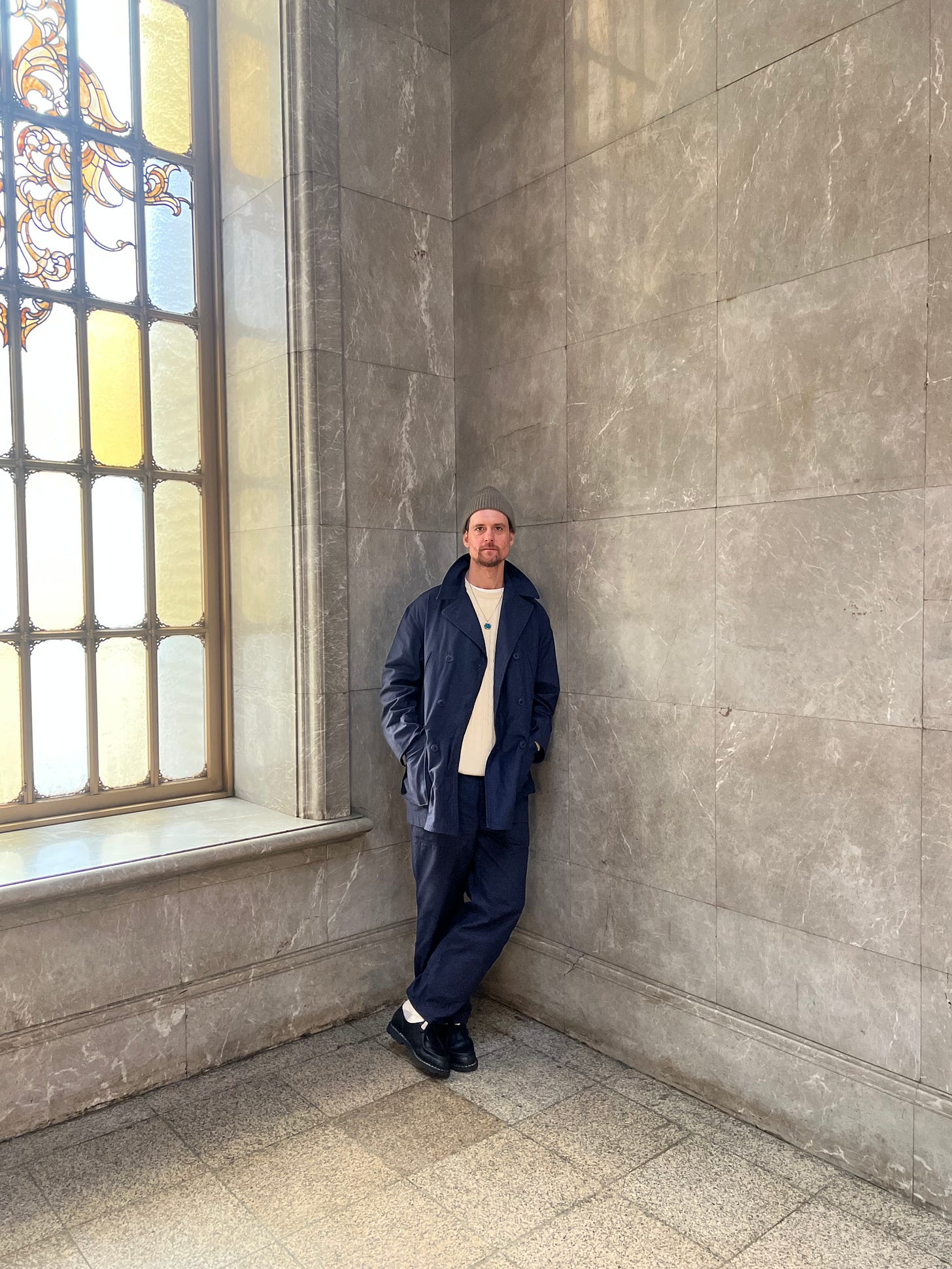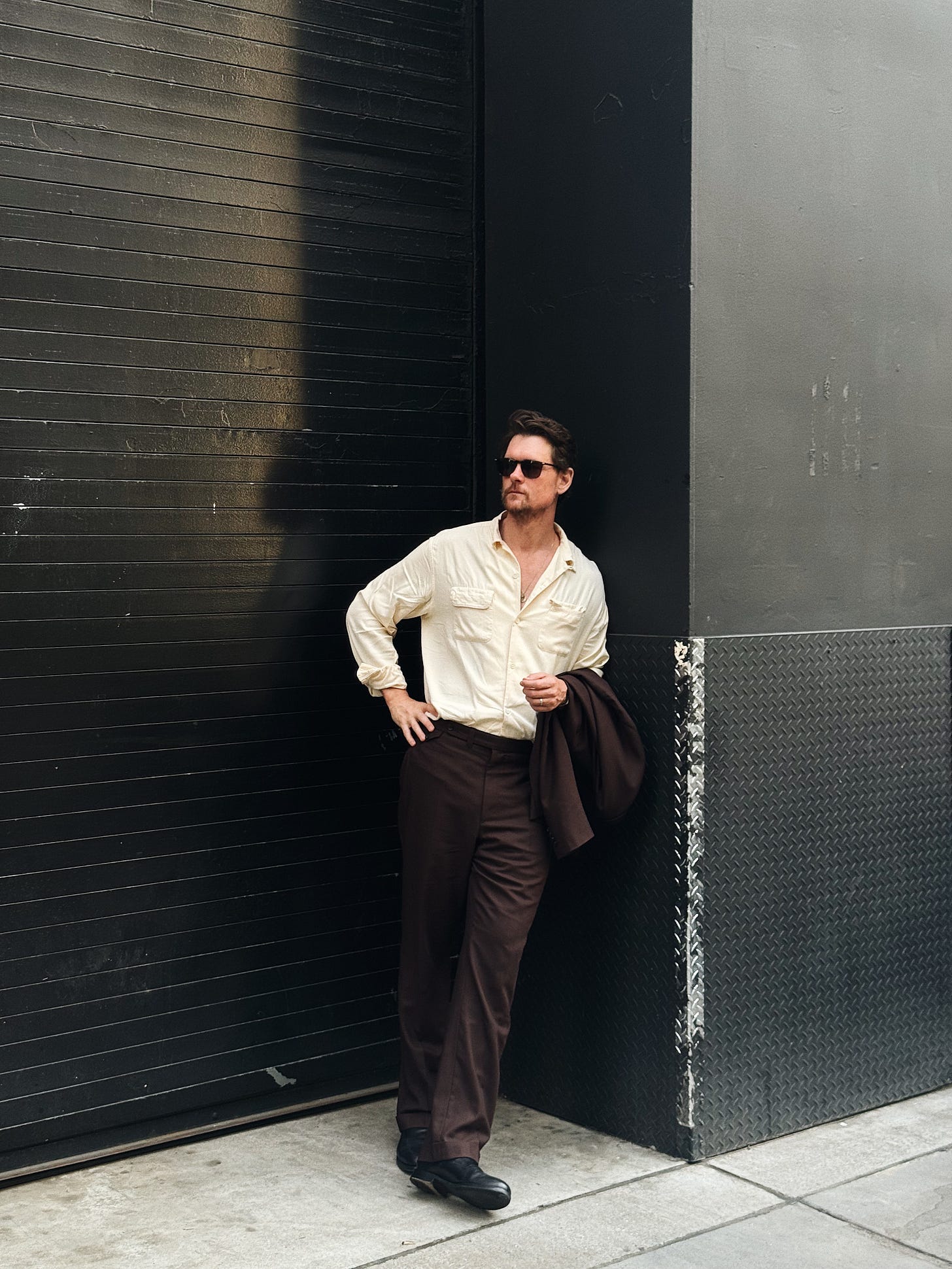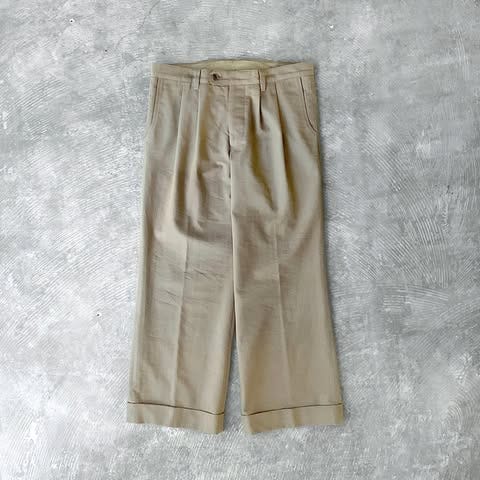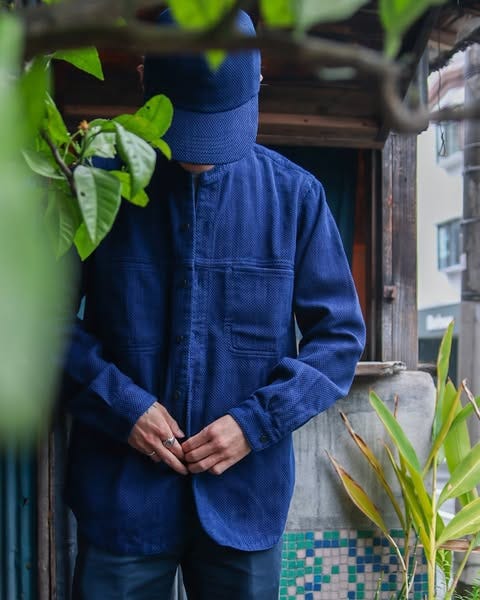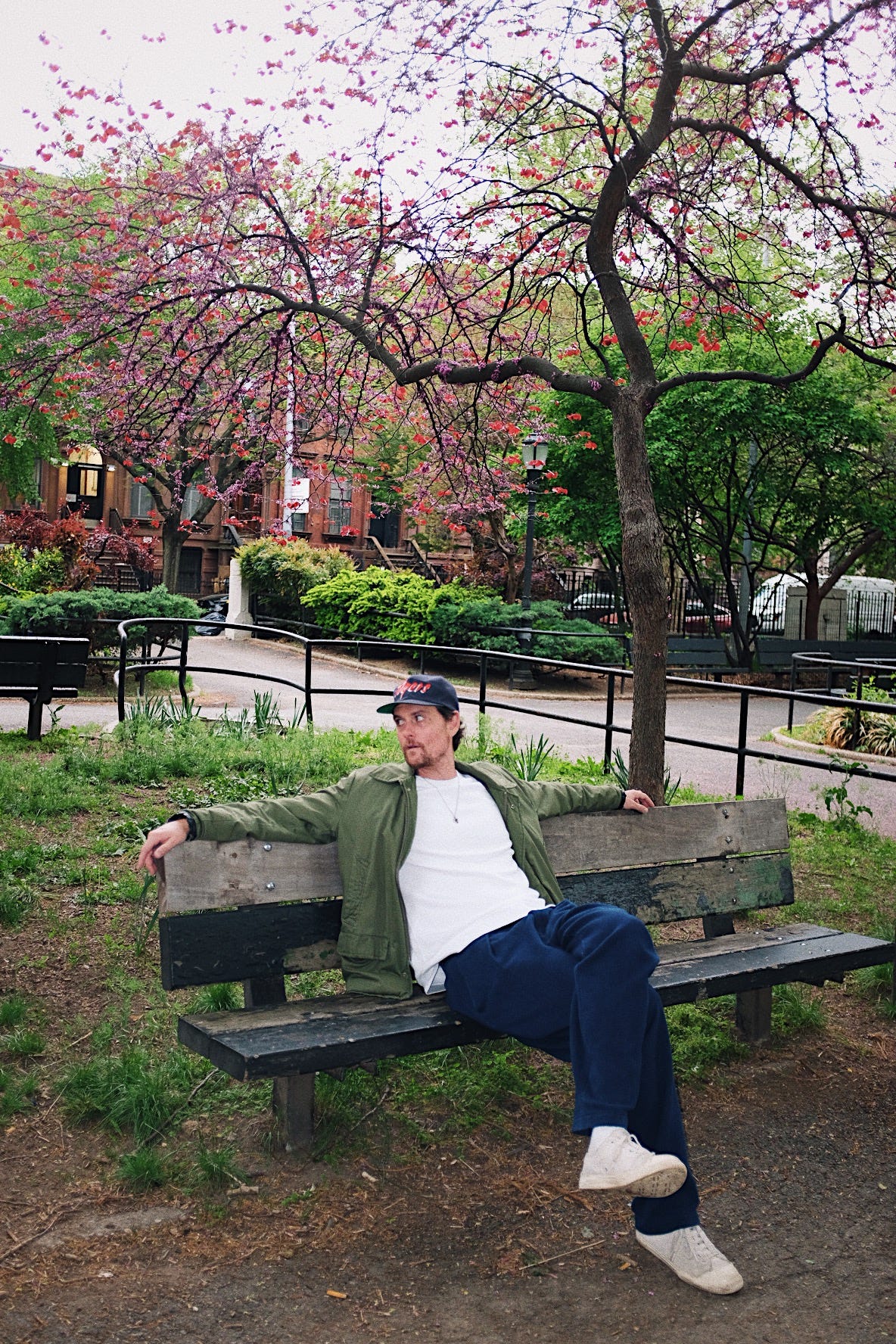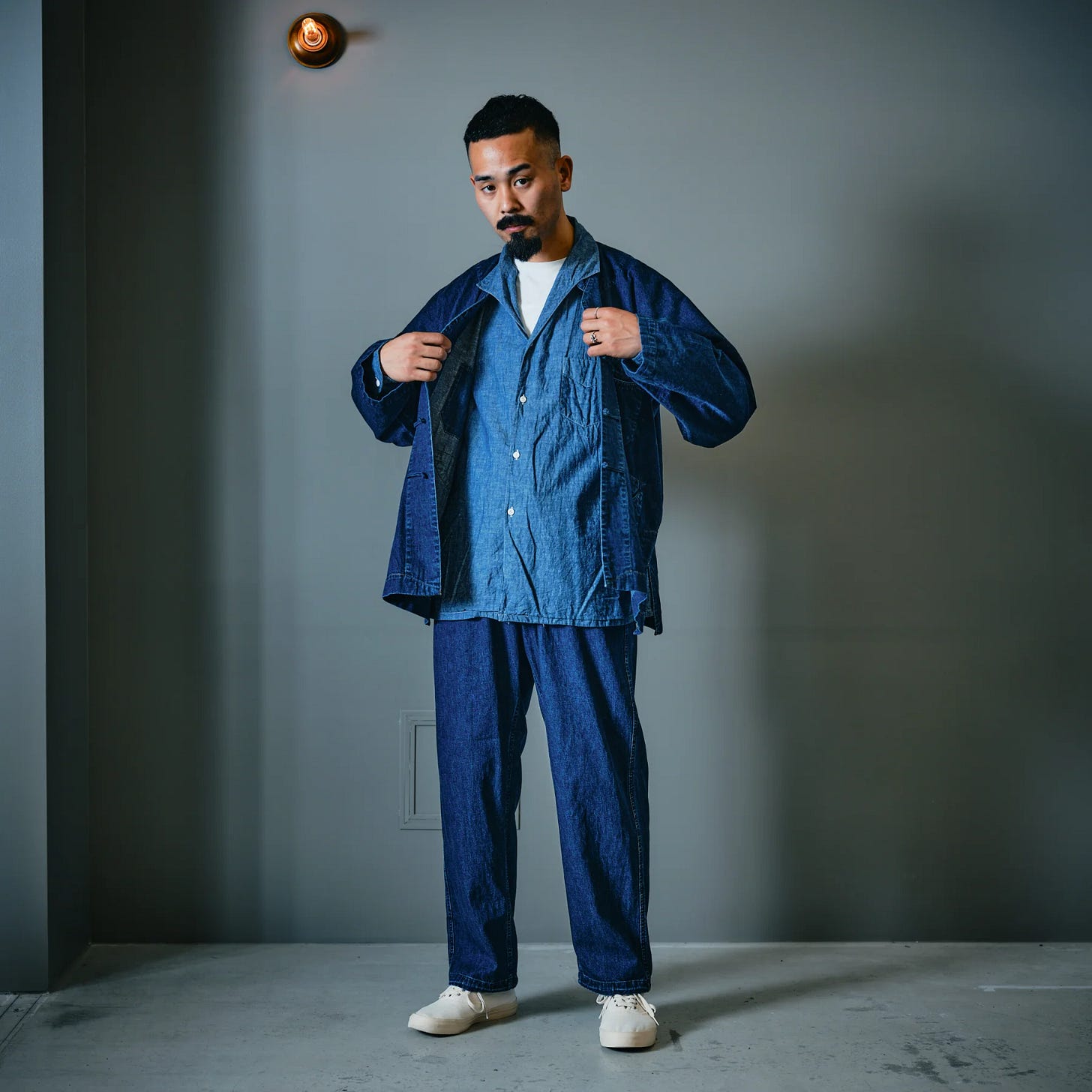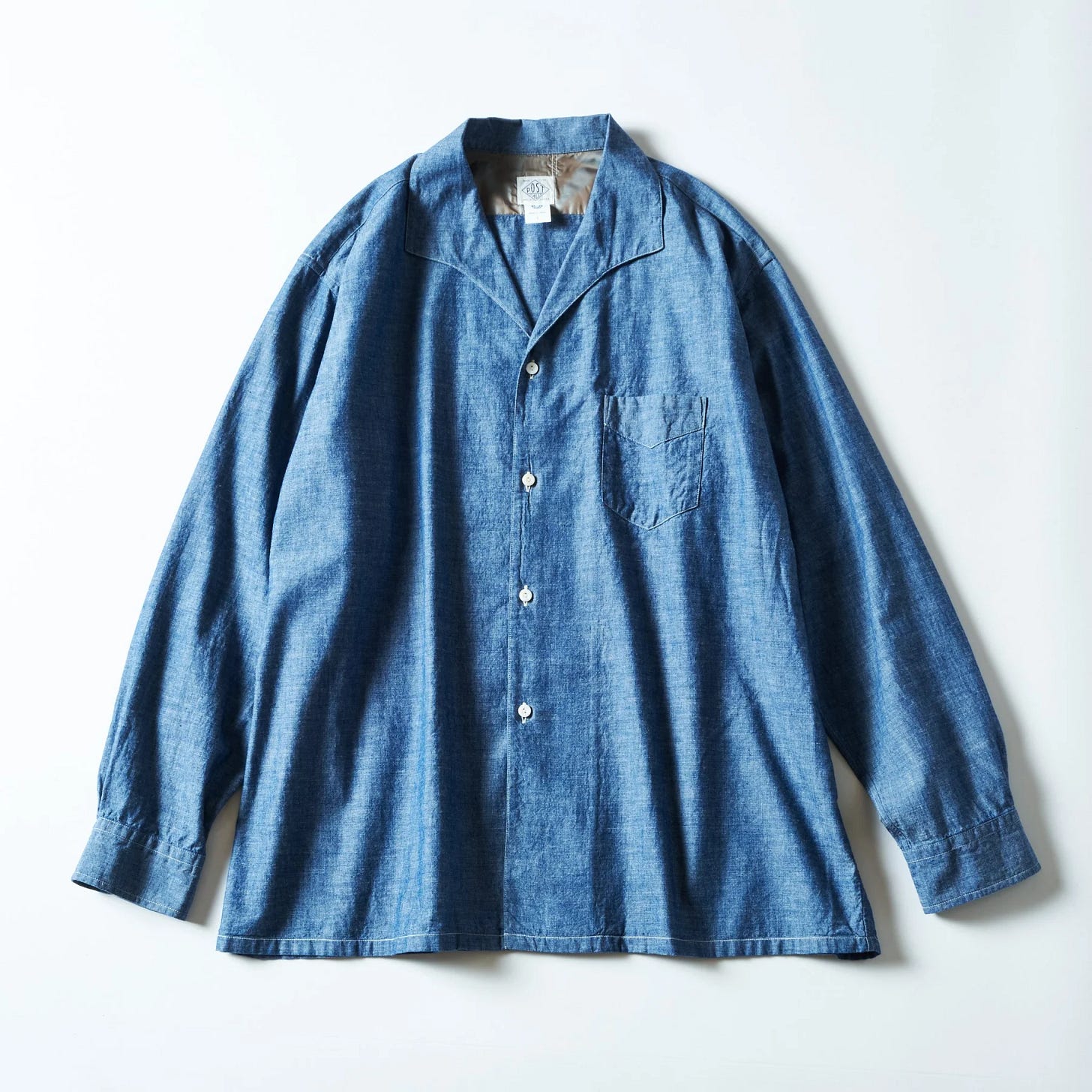Hello FOB readers,
In late summer 2023, I was out of a job and unsure about what to do next in my career. A few months earlier, I’d been laid off after the magazine I edited folded. I hated that job, so it wasn’t the worst thing in the world. But the media industry looked bleak. Layoffs were constant, and publications—print and digital, new and legacy—were either shrinking or shutting down altogether. I couldn’t even land an interview, let alone a job, and I started to wonder if my career as a writer and editor was mostly over.
I thought about going back to school and shifting careers entirely, but I had no idea what I’d do. I’d only ever wanted to be a writer, and any other career I fantasized about seemed just as competitive and impractical as media. As I mulled it over, I invested more time into two of my passions, hoping one (or both) would pay off—or at least help pay the bills until I figured out my next step. One passion was longform writing; the other was style and menswear—this newsletter, in other words.
I launched Front of Book for a couple of reasons. It was a way to channel my obsession with clothing and style and share what I’d learned. I also hoped it might make me more employable in the style space if a job at a brand or publication came up. Mainly, though, I felt there was room for a newsletter that offered practical, no-nonsense advice for regular guys—guys who wanted to look and feel good but needed a little guidance. They’d been abandoned by men’s magazines and left to navigate the Instagram wilderness. At least, that’s how I felt.
Writing this newsletter and building a small audience has been a lot of fun. I’ve met some great people in the menswear world and learned a lot along the way. But Front of Book was still a small menswear newsletter in a growing sea of them, so I was flattered when, a few months ago, an editor at The New York Times’ Wirecutter reached out about a men’s style writer position.
Smash cut to today and I’m the new Senior Staff Writer, Style, at Wirecutter. It’s a great opportunity to take the writing I’ve been doing here and bring it to a wider audience—and to put all those open browser tabs to good use. At Wirecutter, I’ll be writing deeply researched guides to the best in elevated menswear today, and I’m excited to get started.
Accepting the position does mean some changes to this newsletter. To avoid any conflicts of interest, I’ll no longer be able to recommend brands or products here. In the months ahead, I’ll likely shift toward covering other topics that fall into a magazine’s “front of book” section—travel, culture, food, etc.—but in the meantime, I’ve paused all paid subscriptions indefinitely. A huge thank you to those who pitched in to help keep this newsletter afloat over the last few years.
Until I figure out what’s next for Front of Book, you can follow my style writing at Wirecutter and keep up with any longform projects on my website.
For my farewell-for-now post, here it is at last: my Tokyo menswear guide. (Dear NYT Standards Department: I wrote this before I started!) Stay in touch—I’ll be back here at some point soon.
The Tokyo Top Five
There comes a time in the life of every menswear newsletter when its author must publish a Tokyo menswear guide. That time has come for me.
If you’re a Tokyo menswear veteran, there may not be many surprises here. I was only there for a week and barely scratched the surface of all the great shopping the city has to offer. (I didn’t really get into vintage shopping, for example.) But I had a blast pounding the pavement with Mrs. Front of Book, and I brought back some amazing pieces.
Every item I bought in Japan had to meet at least one of three criteria:
It had to be something I don’t already own;
It had to be something I could only get in Japan; or
It had to be significantly cheaper than what I’d pay in the States.
I hoped this system would help me avoid going overboard while still making the most of the trip—and I think it worked. I stayed within reason, didn’t blow the bank, and managed to meaningfully enhance my wardrobe.
Here are my five favorite stores I visited and what I brought home from each.
1. 45R
45R (formerly 45RPM) has been around since 1977 and is known for using the highest-quality fabrics and indigo dyes. I’ve loved their clothes since I first visited the Paris store in 2019, but I’d never bought anything—because, well, the prices are... ahem, quite high.
One of the great things about menswear shopping in Japan is that, for one, the yen is weak compared to the dollar, and two, the clothing is already significantly cheaper than what you’d pay outside Japan. You can be in a store there, find an item, look it up online, and it’ll literally cost double—or more—anywhere else.
We visited a few 45R locations, but it was at the Tokyo Midtown mall where I found the set featured in these photos. I spotted the navy cotton peacoat, and when I tried it on, it felt like whoever designed it had made it specifically for me. It actually met all three of my shopping criteria. It’s an ideal spring jacket—versatile and perfect for layering.
Then the young man at the store reached into a drawer and pulled out a matching pair of drawstring pants. I’m not usually a “set” guy, but I’d noticed that matching sets were very much a thing in Japan. I tried them on together—and it was a hell yes.
I’ve already gotten a ton of wear out of both pieces, separately and together, and I can tell they’re only going to look better with time.
2. The Real McCoys
I could spend all day at The Real McCoy’s basement store in Shibuya. The brand draws inspiration primarily from 1940s and ’50s American workwear, military gear, and leisurewear. Authenticity is the goal: every item is handmade by craftsmen in Japan with obsessive attention to detail and tradition. Their reproductions are made using the same methods and machinery as the originals—and the results are incredible.
Real McCoy’s is probably best known for its loopwheel sweatshirts (which are excellent), but the store offers a bit of everything: black leather motorcycle jackets, selvedge denim, authentic reproduction M-65 field jackets, and much more.
I picked up two pieces from TRM, both from an offshoot casual line called Joe McCoy. One was a pair of brown drawstring cotton shorts—simply because good, reasonably priced men’s shorts are so hard to find. The other was a rayon open-collar resort shirt in ecru, pictured below.
That shirt was a real win. A few days earlier, I’d tried on a similar silk version at Bryceland’s and loved it, but at over $600, it was just too expensive. This one cost only $130—a full $200 less than what it sells for on The Real McCoy’s website. It’s already my go-to summer shirt this year.
3. TS(S)
One charming thing about Japanese clothing companies is that they often operate under two or three different names within the same parent brand. Monitaly has Chamula. The Real McCoy’s has Joe McCoy and Buco. TS(S) is, well, TS(S), but its women’s line is called Toujours, and the parent company is called Not So Hard Work Co.—which feels fitting, since the retail store is hilariously only open two days a week: Friday and Saturday.
I own a pair of brown fleece easy pants from TS(S) that I bought from No Man Walks Alone, and I wear them constantly in the winter, so I was excited to check out their store in Daikanyama. Luckily, my last full day in Tokyo was a Friday.
At first glance, nothing stood out. But then I came across a pair of beige cotton-polyester straight-leg chinos (pictured below). Up close, they looked almost purple—the exterior is beige, but the interior is dyed blue, giving the fabric a subtle, purplish cast. The legs were extra wide with a slight flare at the hem, and I paired them with a brown long-sleeve T-shirt made from a super lightweight wool. Boom—outfit complete. The pants were a bit of a gamble for me, but I’ve already gotten a bunch of compliments on them.
4. Okura
Okura is Blue Blue Japan’s official flagship store—Blue Blue actually began as Okura’s in-house brand back in 1996. The shop is located in Daikanyama, housed in a building designed to resemble a traditional Japanese warehouse. Blue Blue is best known for its indigo-dyed garments—and deservedly so.
I’d never owned anything from the brand, so I was excited to check it out.
As soon as I walked in, I knew what I was getting: a pair of knit cotton indigo pleated chinos displayed at the front of the store. They were so cool—soft, flowing, and just easy. It was a no-brainer. I was tempted to grab a chore coat or an indigo jacket to go with them, but the pants were enough. They’re so comfortable, they feel like sweatpants.
5. Post O’Alls
Post O’Alls, launched in 1993 by Japanese designer Takeshi Ohfuchi—also known as “The Wizard of Workwear”—draws its inspiration from vintage American workwear of the 1920s and ’30s. The brand debuted with a railroad jacket, which is still in production today, along with a line of hunting vests. Today, Post O’Alls remains rooted in workwear tradition, but incorporates unexpected twists in fabric, pattern, and color.
When I visited the store in Nakameguro, what stood out was its range of indigo chambray items. The material was both soft and sturdy, with a dye job that gave the garments an almost metallic sheen. I picked up the “Fever” shirt, below, which I later learned was inspired by 1950s Bayside, Brooklyn, and Saturday Night Fever. I typically wear it as an outer layer—unbuttoned, with a white T-shirt or tank underneath.
Honorable Mentions
Homme Plissé by Issey Miyake: The lightweight polyester pants are possibly the silkiest, most comfortable item of clothing I’ve ever slipped on.
Bryceland’s: I’m still dreaming of that silk shirt… and a few other pieces.
Master-Piece: I finally replaced my Away suitcase with an elegant little black carry-on that seems to be made from some magic expanding material, because it can fit twice as much stuff as my old one.
Ikiji: The store itself didn’t blow my mind, but I do love the brand’s aesthetic and craftsmanship.
Rocky Mountain Featherbed: Menswear nerds’ favorite outerwear brand has a great store in Chuo with a huge selection of parkas and vests. Stop by Anatomica and ARCH Tokyo next door while you’re there.
Thank you, thank you, thank you for reading Front of Book. I promise the newsletter will live on in some form. In the meantime, I’ll see you over at Wirecutter.
Have a great weekend. Go Knicks!
Mitch
Question? Comment? Suggestion? Caught a typo? Email me at mitch.moxley@gmail.com






